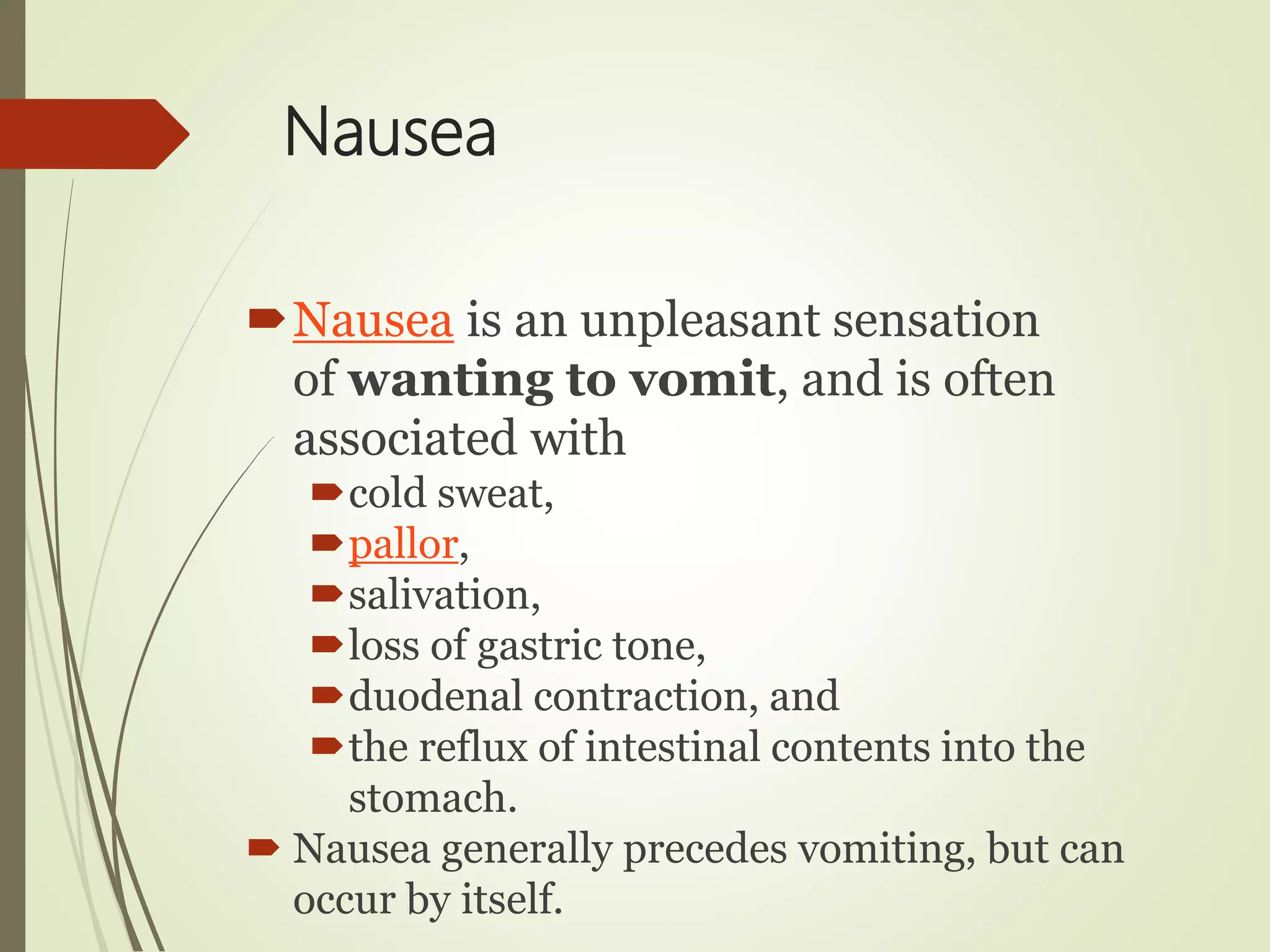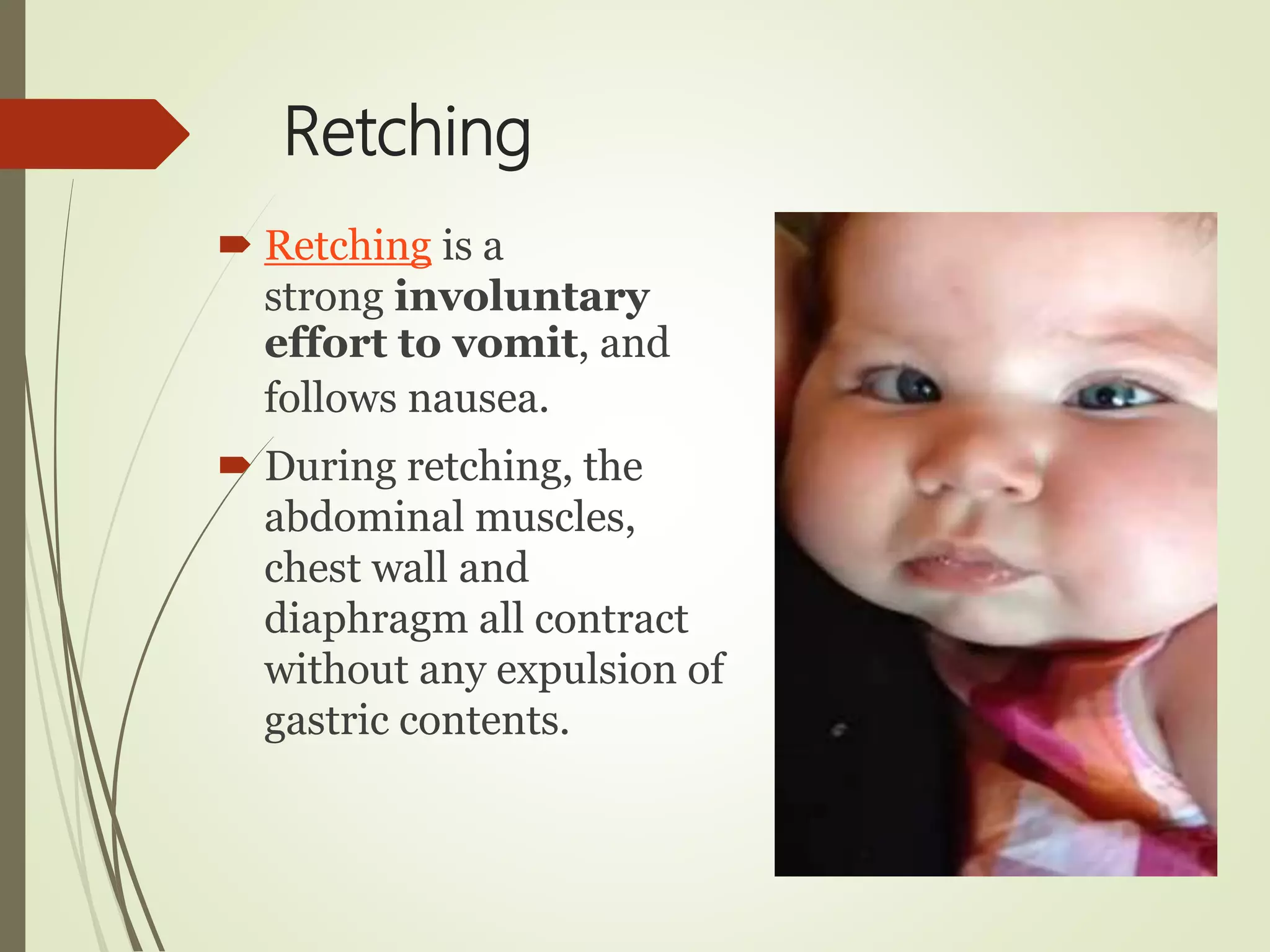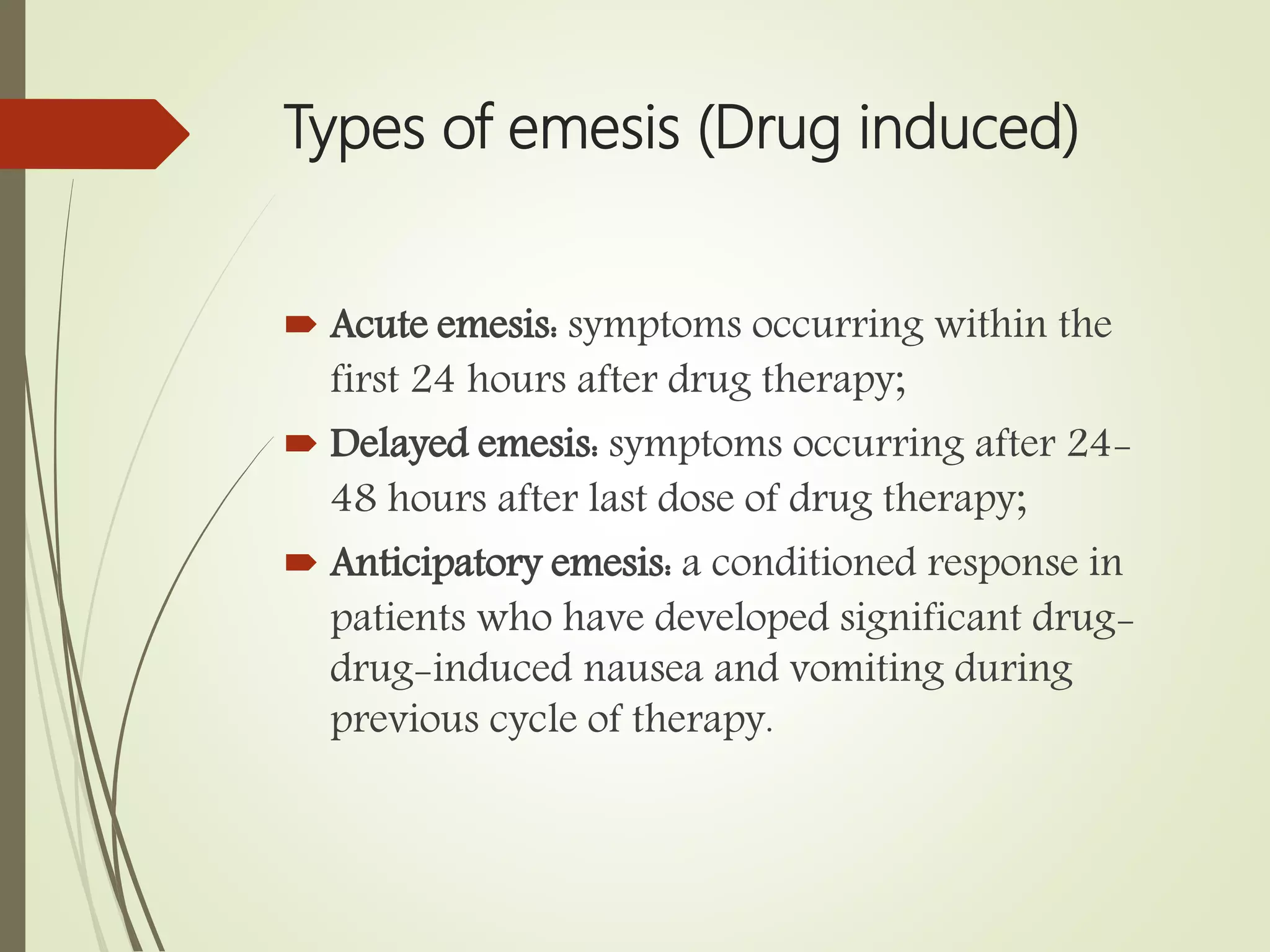This document discusses nausea, vomiting, and antiemetics. It defines nausea, retching, and vomiting and describes the symptoms and causes of nausea and vomiting. It discusses the anatomy of emesis, including the chemoreceptor trigger zone and vomiting center in the brainstem. It outlines the mechanisms of vomiting and describes various types of drug-induced vomiting. It also discusses the therapeutic use of emetic agents and the management of nausea and vomiting, including lifestyle changes, pharmacotherapy using various classes of antiemetics, and prokinetic drugs.






























































































